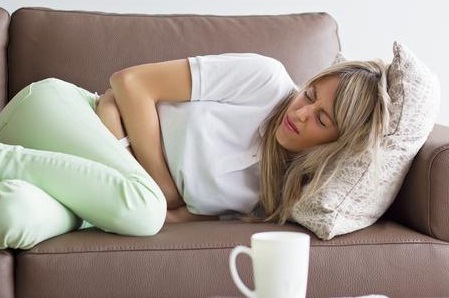The pain you experience before period is due to menstrual cramps, which can be severe or mild and most often affect your lower abdomen and the pelvic region. In medical term, painful menstruation is called dysmenorrhea. There is another situation in which women experience cramping after period. Is this situation normal? Keep reading to learn more about it.

Why Do I Experience Cramping After Period?
Some women experience cramping after period¸ but there can be some other reasons associated with pain after your period has completed.
1. Ovulation
Ovulation is one of the most common causes of pain after period. Ovulation occurs when an egg comes out of the ovaries. Under normal circumstances, this shouldn't cause any pain, but you may have developed a condition called mittelschmerz that causes cramps and pelvic pain when ovulation which normally begins a couple weeks after your last period has ended.
The pain you experience due to this condition is different from your typical menstrual cramps. It could be sharp pulsing pain affecting only one side of your body or it may turn into dull aches and switch sides as well.
2. Birth Control Devices
You may be experience cramping after period because you've recently had an intrauterine device inserted. Medical professionals implant these small plastic devices into your uterus to prevent sperms from reaching an egg and, therefore, prevent pregnancy. Some women complain about experiencing mild cramps for a few months after they've had a device inserted. You experience the pain because your uterus takes time to adjust to the foreign presence. Though these cramps don't have anything to do with menstruation, they often come between periods and feel like menstrual cramps.
3. Endometriosis
Endometriosis refers to a condition in which the uterine tissue grows outside of the uterus such as the ovaries and causes cramp-like pain. These growths cannot go out of your body like typical uterine tissue, even though they break and bleed like normal uterine tissue during the menstrual cycle. Most women experience constant pelvic cramps that become more noticeable during periods. Besides, when the tissue heals itself after periods, it sometimes damages nearby organs, causing pain. Severe bloating is also one of many signs of endometriosis.
4. Adenomyosis
The endometrial glandular tissue is there within the muscular wall of your uterus. Due to a condition called adenomyosis, the tissue grows abnormally and causes several symptoms, such as blood clots, heavy menstruation, abnormal uterine bleeding and cramping after period.
5. Uterine Fibroids
In some cases, your cramping pain is due to non-cancerous tumors that grow in the smooth uterine muscle tissues. Along with pain after period, the tumors can also cause other symptoms such as frequent urination, increased weight in the waistline and irregular bleeding.
6. Ovarian Cysts
Due to many different issues, there may be a cyst developed in the ovaries that cause severe pain. These cysts are one of the primary causes of secondary dysmenorrhea and may even lead to complications such as infertility and polycystic ovarian syndrome.
7. Pelvic Inflammation Disease
Any bacterial infection inside the ovaries, uterus or fallopian tubes can cause cramping after period. The infection may also cause tissue scarring and infertility. The most common symptoms of a pelvic inflammation disease include irregular menstrual bleeding, vaginal discharge and fever.
When to See a Doctor
You may have gathered the fact that there can be so many different possible causes of cramp-like pain after your periods. However, you should go see your doctor if your pain is persistent. It is also important to talk to your doctor if unexplained and recurring cramping pain occurs with blood in the stool, high fevers or dizziness. Your doctor may conduct a pelvic exam and order imaging tests for a proper diagnosis. They will also ask about the symptoms that you're experiencing to help identify the underlying cause of your cramping pain.
How to Deal With Cramping After Period
When you have unexplained cramps after your period, it is important to talk to your healthcare provider for proper diagnosis. Here's how you can deal with cramping after period.
1. Medications
You may have to take a combination of antibiotics, non-steroidal anti-inflammatory drugs, hormonal therapies and hormonal birth control pills. In case the underlying cause of your pain is a fluid-filled sac or cyst, you may require a surgery to relieve your pain. The treatment option your doctor selects will depend on your symptoms and the underlying cause of your pain.
2. Home Remedies
You can take some home care measures to reduce the pain during and after your period. For instance:
- You can alleviate pain by taking OTC painkillers or analgesics.
- You may experience some relief by taking a warm shower.
- You may make your pain more manageable by drinking warm beverages.
- You may find your pain become more manageable by applying a heating pad on your lower abdomen.
- You may also use some relaxation techniques to alleviate pain and discomfort.
Always keep in mind that persistent pain or cramping after period can be a sign of a serious reproductive system disease. A combination of a healthy lifestyle, a balanced diet and appropriate medication will help relieve your symptoms. Don't overlook the pain and discuss it with your doctor to ensure it's nothing serious.